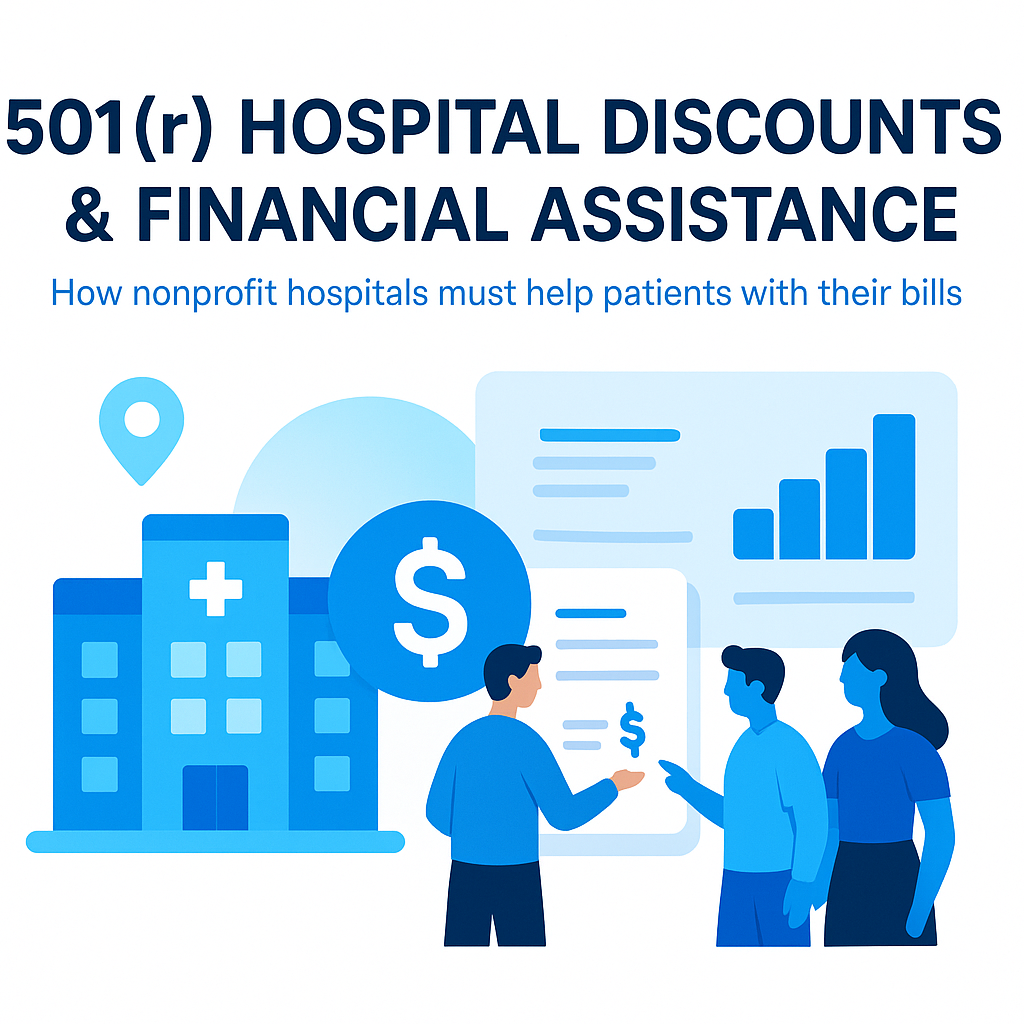Understanding the 501(r) Discount Program: A Guide for Healthcare Consumers and Providers
As healthcare costs continue to rise, understanding available financial assistance programs is crucial for both consumers and providers. The 501(r) discount program, part of the Affordable Care Act, offers a significant opportunity for eligible individuals to receive necessary medical care at reduced costs. This article explores the 501(r) program, its benefits, and the states where it is available.
What is the 501(r) Discount Program?
The 501(r) discount program is a federal initiative designed to ensure that non-profit hospitals provide financial assistance to eligible patients. This program mandates that hospitals must establish and publicize their financial assistance policies, ensuring that low-income individuals can access essential healthcare services without the burden of insurmountable medical bills.
Key Features of the 501(r) Program
The 501(r) program includes several critical components:
- Financial Assistance Policy (FAP): Hospitals must clearly define and communicate their financial assistance policies, including eligibility criteria and the application process.
- Limitation on Charges: Eligible patients cannot be charged more than the amounts generally billed to insured patients for emergency or other medically necessary care.
- Billing and Collection Restrictions: Hospitals are prohibited from engaging in extraordinary collection actions before determining whether a patient qualifies for financial assistance.
Eligibility Criteria
Eligibility for the 501(r) discount program typically depends on household income relative to the federal poverty level (FPL). Each participating hospital sets its own guidelines, but generally, individuals with incomes at or below 200-300% of the FPL may qualify for assistance. Some hospitals may also consider other factors, such as family size and medical expenses.
States Offering the 501(r) Program
The 501(r) program is a federal requirement for all non-profit hospitals across the United States. Therefore, it is available in all states, ensuring nationwide access to financial assistance for eligible individuals. However, the specific implementation and benefits can vary by hospital and state regulations.
How to Apply for the 501(r) Program
Applying for the 501(r) discount program involves several steps:
- Review the Hospital's FAP: Begin by reviewing the financial assistance policy of your local hospital, which is usually available on their website or upon request.
- Gather Required Documentation: Prepare necessary documents such as proof of income, tax returns, and any other paperwork specified by the hospital.
- Submit an Application: Complete and submit the hospital’s financial assistance application. Ensure all required information and documentation are included to avoid delays.
- Follow Up: After submission, follow up with the hospital’s financial assistance office to confirm receipt and inquire about the status of your application.
Benefits of the 501(r) Program
The 501(r) program provides numerous benefits to eligible patients, including:
- Reduced Financial Burden: By limiting charges and offering financial assistance, the program helps reduce the financial burden on patients, allowing them to focus on recovery and health.
- Increased Access to Care: Patients are more likely to seek necessary medical treatment when they know financial assistance is available, leading to better health outcomes.
- Protection Against Aggressive Collections: Patients are protected from aggressive collection practices, providing peace of mind during medical emergencies.
Conclusion
The 501(r) discount program is a vital resource for individuals struggling with healthcare costs. By understanding the program's features and eligibility requirements, patients and providers can work together to ensure access to affordable medical care. As healthcare continues to evolve, staying informed about such programs will be increasingly important for all stakeholders.
Key Takeaways
- The 501(r) discount program is a federal initiative requiring non-profit hospitals to provide financial assistance to eligible patients.
- Eligibility is generally based on income relative to the federal poverty level, with specifics varying by hospital.
- The program is available nationwide, ensuring access to financial assistance across all states.
Medical Disclaimer: This article is for informational purposes only and does not constitute medical or financial advice. Please consult with a healthcare professional or financial advisor for personalized guidance.

Be the first to comment.